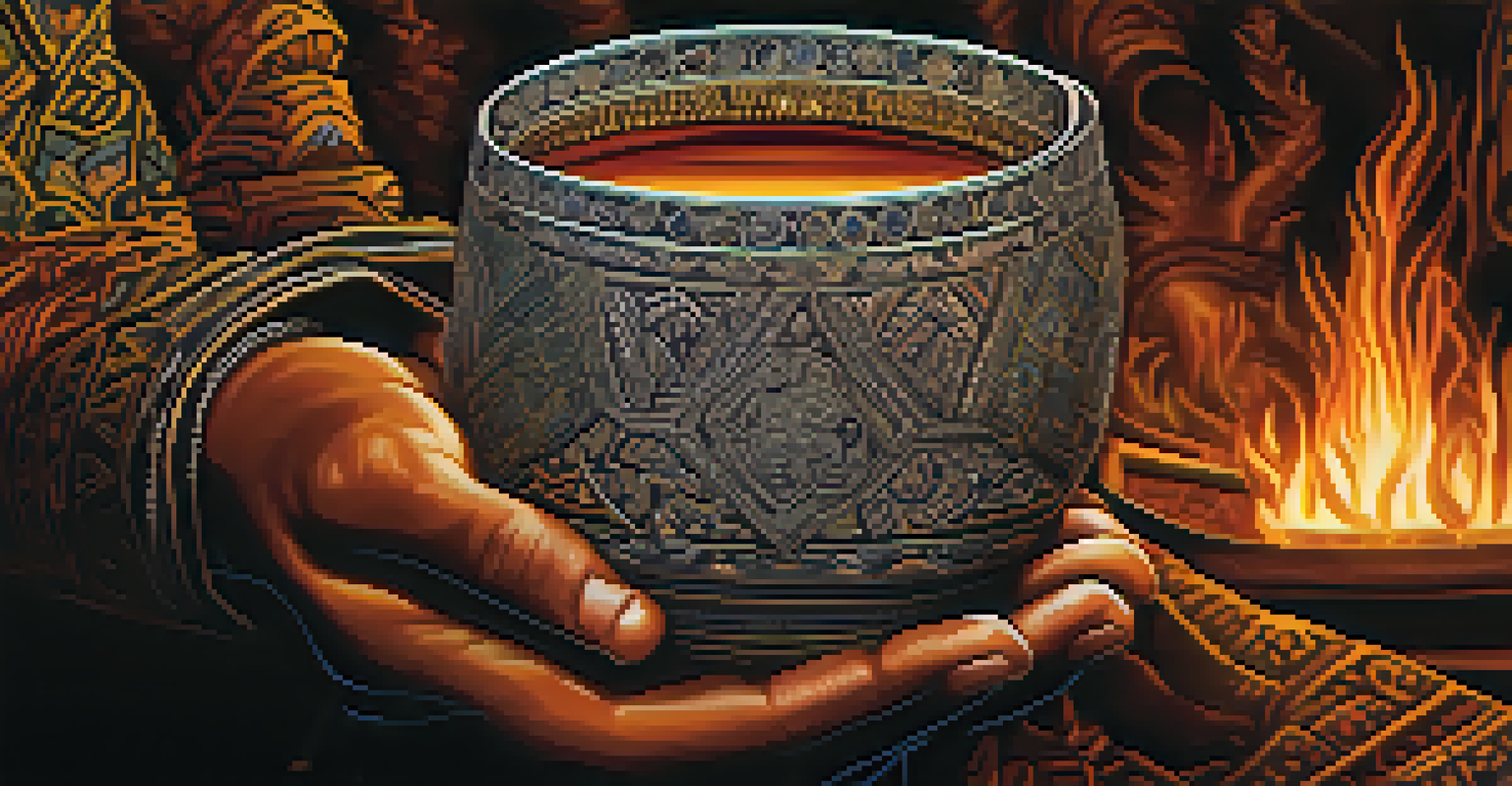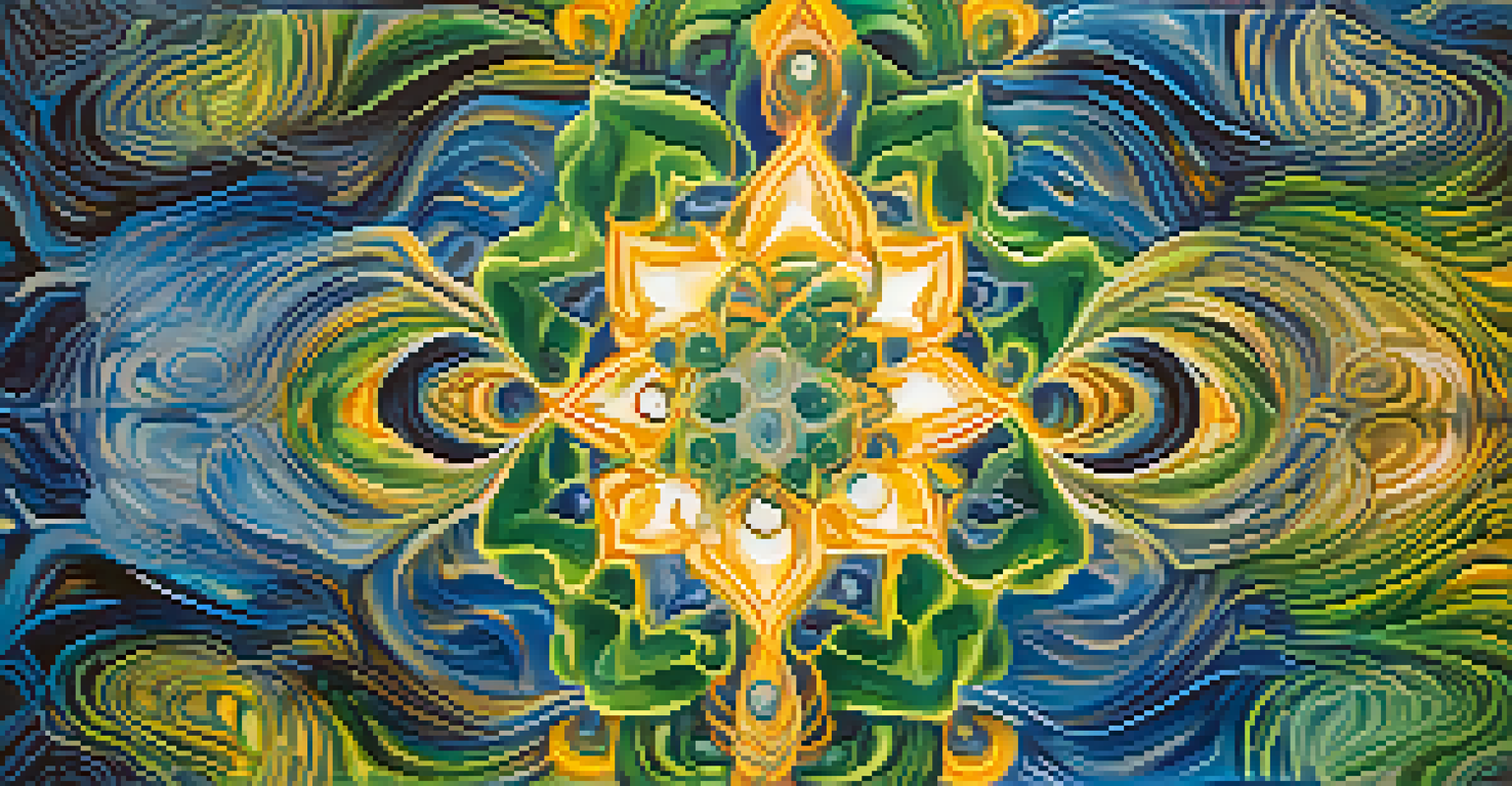Fear as a Teacher: Lessons Learned from Ayahuasca Journeys

Understanding Fear in the Context of Ayahuasca
Fear is often seen as a barrier, but within the context of Ayahuasca journeys, it can become a powerful teacher. During these experiences, participants frequently confront their deepest fears, leading to a profound understanding of themselves. This confrontation is not meant to instill terror but to allow individuals to explore neglected parts of their psyche.
The only thing we have to fear is fear itself.
Ayahuasca, a traditional Amazonian brew, induces altered states of consciousness that can amplify feelings of fear. However, this intensity serves a purpose: it brings hidden emotions to the surface. By facing these fears head-on, individuals can begin to unravel the stories they've built around them, leading to personal revelations and growth.
The journey with Ayahuasca can be likened to peeling an onion; each layer removed reveals deeper truths about oneself. As participants peel back their layers of fear, they often discover that the things they were afraid of were just illusions shaped by past experiences or societal expectations.
The Role of Intention in Ayahuasca Journeys
Setting an intention before participating in an Ayahuasca ceremony can significantly influence the experience. This intention acts as a guiding star, helping individuals navigate their fears and insights throughout the journey. When participants approach the ceremony with a clear purpose, they are more likely to engage with their fears constructively.

For example, someone who fears abandonment might set the intention to explore their relationships and patterns of attachment. This focus can help them confront those fears during their journey, leading to transformative insights. Intentions provide a framework that helps participants understand the lessons their fears are trying to teach.
Fear as a Catalyst for Growth
Confronting fear during Ayahuasca journeys can lead to profound personal insights and transformative growth.
Moreover, having a supportive environment, such as a knowledgeable guide or a community of fellow participants, enhances the ability to face fears. These supportive elements create a safe space for exploration, allowing individuals to delve deeper into their emotional landscapes.
Confronting Fear: The Experience of Dissolution
Many participants describe moments during their Ayahuasca experience where they feel a sense of dissolution or ego death. This profound experience can initially be terrifying, as it challenges one’s sense of identity and control. However, this sensation often leads to significant breakthroughs, revealing that fear is tied to the ego's need for security.
Fear is a teacher of important lessons if you are only willing to listen to it.
When individuals let go of their ego-driven fears, they often report feelings of liberation and interconnectedness. They realize that their fears are not insurmountable obstacles but rather temporary feelings that can be explored and understood. This shift in perspective allows for a new relationship with fear, seeing it as a natural part of the human experience.
The dissolution experience can be seen as a metaphorical death, where old fears and limiting beliefs are released. This process can lead to rebirth, as participants emerge with new insights and a lighter emotional load, ready to embrace life with renewed vigor.
Integration: Turning Fear into Wisdom
After an Ayahuasca journey, the integration phase is crucial for transforming fear into wisdom. This involves reflecting on the insights gained during the experience and applying them to everyday life. Integration helps individuals make sense of their fears and the lessons learned, turning them into actionable steps for personal growth.
For instance, someone who faced a fear of failure might come away with the understanding that failure is a stepping stone to success. By integrating this lesson, they can approach future challenges with a newfound resilience. Integration encourages individuals to take accountability for their emotional journeys and continue their personal evolution.
Importance of Setting Intentions
Having a clear intention before an Ayahuasca ceremony helps participants navigate their fears constructively.
Journaling, sharing experiences with others, or seeking therapy can enhance the integration process. These practices provide avenues for individuals to articulate their fears and insights, ensuring that the teachings of Ayahuasca resonate long after the ceremony has ended.
Common Fears Encountered During Ayahuasca Journeys
Participants often encounter a range of fears during their Ayahuasca experiences, including fear of death, abandonment, and failure. These fears are deeply rooted in human experience and can manifest in various ways during the journey. Acknowledging these common fears creates a sense of shared understanding among participants.
For example, the fear of death may arise as individuals confront their mortality or unresolved grief. This confrontation can lead to valuable insights about the impermanence of life and the importance of living authentically. Understanding that others face similar fears can foster a sense of community and support during the journey.
Recognizing these fears as universal experiences can empower individuals to navigate their own journeys with empathy and understanding. By sharing their fears, participants can help each other process emotions, turning potentially isolating experiences into collective healing.
The Healing Power of Facing Fear
Facing fear through Ayahuasca can lead to profound healing and personal transformation. When individuals confront their fears, they often find that the emotional weight they carry begins to lift, allowing for healing on multiple levels. This process can lead to greater self-acceptance and a more authentic way of living.
Moreover, the healing power of facing fear extends beyond the individual. As people work through their fears, they may notice improvements in their relationships and interactions with others. This shift occurs because they no longer project their fears onto others, creating healthier dynamics.
Integration Turns Fear into Wisdom
The integration phase after an Ayahuasca experience is crucial for applying insights gained and turning fear into actionable wisdom.
The journey of healing through fear can be likened to the process of weathering a storm. While the storm may be intense, once it passes, there is clarity and calm. Participants often emerge from their Ayahuasca experiences with a sense of renewal, ready to embrace life with fresh perspectives and newfound courage.
Embracing Fear as a Lifelong Teacher
As individuals continue their journey of personal growth post-Ayahuasca, they often learn to embrace fear as a lifelong teacher. Rather than viewing fear as something to avoid, they begin to see it as a valuable source of insight and understanding. This shift in perspective can lead to a more empowered approach to life's challenges.
By cultivating a relationship with fear, individuals can develop resilience and adaptability. For instance, someone who has faced their fear of public speaking may find that this newfound courage inspires them to pursue opportunities they once avoided. Embracing fear allows for a more expansive life experience.

Ultimately, the lessons learned from Ayahuasca journeys can guide individuals as they navigate the complexities of life. By treating fear as a teacher, they open themselves up to continuous growth and deeper self-discovery, enriching their lives far beyond the confines of a single ceremony.